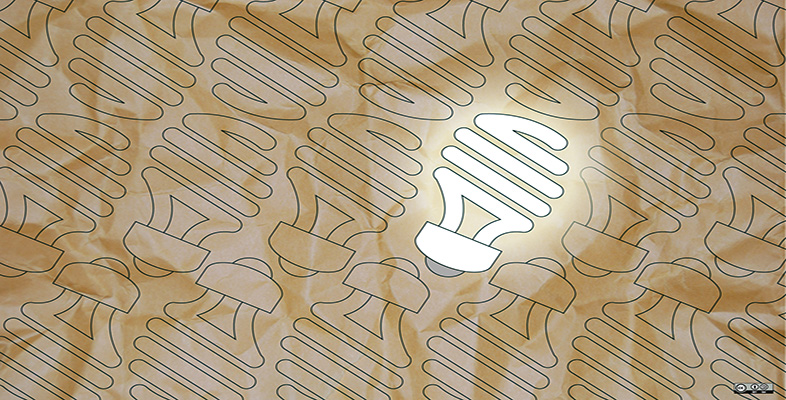2.1 Visions of innovation
Visions set the direction of innovation and help enrol key actors in the process. For example, visions of an innovative new housing development may give financiers a sufficient basis to begin to invest and other actors, such as local planners, an interest and reason to be involved. In the context of innovation processes, visions can be defined as
collectively held and communicable schemata that represent future objectives and express the means by which objectives will be realized
(Eames et al., 2006)
Representations are used to develop and communicate visions to others, to initiate the design and innovation process, set direction, enrol key stakeholders and help to create tangible outputs to assess and modify the scope of the vision.
Activity 4 Communicating visions for innovation
The following video is an excerpt from an episode of Design for Life, a TV show which followed UK design students competing for a place at Philippe Starck’s School of Design. In this episode the students have been asked to develop an innovative project. Watch Starck’s presentation of the design brief, and the students presentations of their projects, and consider the way that the students communicate their vision to Starck. Answer the following questions:
- What representations do the students use?
- Which of these are effective in communicating the vision or concept?
- What does Starck say about the projects?
Use the textbox to record your impressions.
Transcript: Video 2 Design for life
Answer
Ilsa uses a combination of representations to communicate her idea for sustainable clothing. The tactile board was effective because it illustrated specific details of her idea. Similarly, the image board was effective because it illustrated the context of the idea. However, the scarf distracted Starck’s attention away from the core message.
Rob used a physical model to communicate his vision for communities living on the sea. The model, constructed from card/paper, was not very effective at communicating this vision, and Starck said it was unoriginal and undeveloped.
Mike’s idea of improved communication through personalised t-shirts is demonstrated via a prototype. This effectively presents the scope and detail of the idea and illustrates how it could be realised in a product. Despite this, Starck found it unoriginal and unambitious.
Trevor also uses prototypes to demonstrate his concept for an engraving device that can be used to convert everyday materials into communication devices. The prototypes were effective because they are physical demonstrations of how the concept could be realised, but Starck wasn’t convinced it was progressive enough.
Jess has a vision of a worldwide community, which is celebrated by an annual turn-the-power-off fortnight. The scope of this vision is communicated effectively via visual analogy, using a globe surrounded by a ring of people holding hands, and connected to a power source, to illustrate the underlying concepts. Starck seemed unconvinced but appreciated the process of abstract thinking.
Robert uses an image board and a selection of existing products to communicate his idea for a sensory kit to celebrate the bonding process between mother and child. This is not very effective and Starck struggled to understand the idea.
Polly uses prompt cards and an image board to communicate her concept for a household water meter which monitors and displays water usage and cost. The prompt cards effectively communicate the context for the concept, while the image board effectively demonstrates how it could be realised in a product. Starck was impressed.
Nabile has a vision for a ‘vehicle for mutation’, which he communicates using both a card/paper model and an image board. These were not very effective for communicating the vision, and Starck found the idea to be clever but uninspired.
Helen presents a concept for an environmentally friendly tampon and communicates this effectively using image boards that indicate the scope of the concept and how it could be realised in a product. Starck was impressed.
Anna communicates her idea for an organic bin using a prototype that effectively demonstrated how it could be realised in a product, but Starck was not convinced by the concept.
Discussion
The ideas and concepts presented by the design students were of variable quality, and only the water meter and the environmentally friendly tampon impressed Starck. The students all used visual representations of some form to communicate their vision for innovation. They did this not because it is what is expected of a designer, but because the representations allow them to present certain aspects of their vision. Prototypes, image boards, models, etc., are all used to highlight different perspectives that the students think are important. The most effective presentations included representations that communicated more than one perspective. They provided both context and credibility by illustrating the need for the vision, and by indicating how the vision could be realised.
